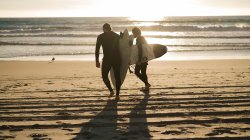Coders with Cores going to Conferences
Arye Janoff, ENSM PhD student, delves into his time in the program
Posted in: Students
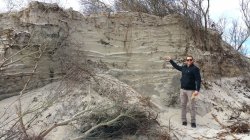
Are you familiar with the Netflix show, Comedians in Cars Getting Coffee starring Jerry Seinfeld? The premise sees Jerry gathering a fellow comedian into a vintage automobile, hand-selected to match that guest’s personality. The pair then swing by a local eatery where they schmooze and laugh over seemingly endless coffee. While scientists have yet to master the art of sidesplitting humor (though not for lack of trying), we share the same thirst for creative exploration and novelty. Unsurprisingly this is frequently quenched by copious amounts of coffee. After all, PhD students know a thing or two about the benefits of coffee, for those early morning conference sessions, long days in the field, or late nights in the computer lab. In all seriousness, it is precisely these most challenging experiences over the course of my PhD that not only shaped who I am as a critical thinker, but also impelled my growth as an individual.
Financial support from this Program and my National Science Foundation (NSF) research grant, has led to career opportunities across the United States and beyond. These resources cover both conference costs and field campaigns, which serve as crucial catalysts for both my research progression and professional development.
For my dissertation work, I explore feedbacks between natural shoreline dynamics and community-scale socioeconomics to understand how humans choose to manage erosion-prone beaches. Stationed at Montclair State University (MSU) and in close proximity to New York City and its sprawling suburbs, we can observe these human-natural interactions along the heavily developed New Jersey coastline firsthand. Toward this goal, I have constructed a numerical model that simplifies the multi-layered coastal system into its principal components. With an idealized framework, we can boil down complex connections into simple relationships, and attribute a system’s outcomes to its main controls. Coastal dynamics are complicated and human behavior is no different. Linking the two is both challenging and exciting, much like a computer modeler doing fieldwork! Just don’t forget your mosquito nets or you’ll be itching to get back into the computer lab!
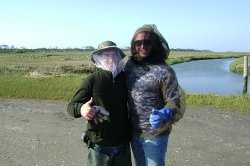
For one project I collaborated with researchers Drs. Chris Hein and Justin Shawler. I helped collect sediment samples from salt marshes, lagoons, and barrier islands along the Eastern Shore of Virginia. One of the project’s goals was to reconstruct historical coastal environments, and understand how Holocene (~11,000 years ago to modern day) coastal barrier systems interact with their underlying Pleistocene (~2.5 million—11,000 years ago) topography. We used a Vibracoring rig in the marshes and backbarrier lagoons, mounting the coring tripod atop the 30’-long Research Vessel (R/V) Perigrination, fitted with a moon hole in the center through which we collected the subsurface sediment samples. Utilizing vibration of the core pipe, it sinks slowly through the soft lagoon/marsh mud as far as 30 feet below the surface. This provides a glimpse into the system’s past.
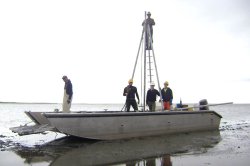
We also used a direct-push drill rig (Geoprobe) to collect deeper sediments in the hopes of reaching the antecedent Pleistocene surface. The Geoprobe’s name is Bruce (after our hometown hero, “the Boss”), so naturally, rigs like him were born to drill. In fact, Bruce got us down to 80 feet, which indeed reached the older Pleistocene deposits (we could have gone deeper if we hadn’t run out of core pipe)!
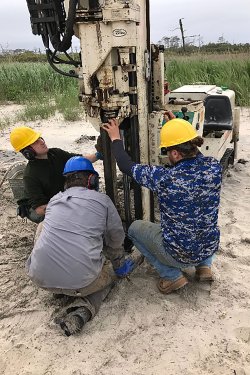
The distribution of grain sizes with depth tells us about the system’s energy and the type of environment in which the sediment was deposited. These could include beaches, dune ridges, washover fans from a storm event, salt marshes, lagoons, etc. Combining multiple cores in cross-shore (perpendicular to the coast) allows us to infer the historical positions of the barrier and backbarrier marsh/lagoon, and the resultant sea levels. Ideally, we can use various methods to constrain the timeframe corresponding to each sand or mud layer. One of which could include carbon dating of organic matter such as shell fragments. We can then conceptualize the system’s evolution to describe how it might respond under future conditions (i.e. sea-level-rise rates, wave climates, etc.).
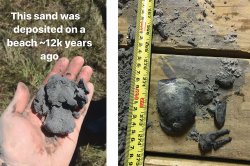
As coastal researchers, our hands aren’t only dirtied by marsh mud and shell hash. We also use numerical models to simulate what we observe in the field. Quantitative and computational skills are important for any aspiring earth scientist, not only for research purposes but also for personal marketability. Various modeling and spatial analysis tools (Matlab, Python, R, ArcGIS/QGIS, Google Earth Engine, etc.) allow us to explore earth systems with high efficiency from the comfort of our computer lab, and with expert doctoral faculty within arms’ reach. Specifically, math-intensive discussions with my advisor, Dr. Jorge Lorenzo Trueba, have instilled a comprehensive approach to studying the dynamics of earth systems. These conversations have also taught me how to ask more compelling scientific questions. This collaborative, integrated environment helps develop the skills necessary to transcend multiple scientific disciplines—a hallmark challenge of contemporary research.
While field and lab work are important for developing an expansive skillset, I often learn the most from conversations with fellow researchers at scientific conferences. Aside from the excitement of making new friends, the diversity of science questions and approaches kindles newfound curiosities for subject areas different from my own. Poster sessions are excellent venues for such conversations.
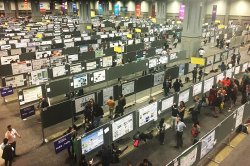
Not only do conferences serve to inspire, but also to test my progress and findings in front of some of the best researchers in my field. These experiences provide valuable feedback to hone my presentations in order to better articulate the key messages of my work. In addition, I often learn something new about my own earth system from these colleagues, both experienced and early career. With support from the ENSM PhD program and the NSF, I have attended various conferences across the country over the course of my degree.
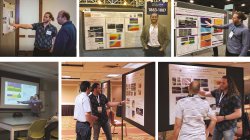
In addition, these conferences often host field trips to explore local research facilities and equipment. In St. Petersburg, FL for the Coastal Sediments 2019 meeting, colleagues and I had this opportunity. We toured the University of South Florida’s College of Marine Science and the USGS Coastal and Marine Science Center. The experience not only exposed me to various field research methods and techniques, but also supplemented the traditional conference program with a more kinesthetic learning environment.
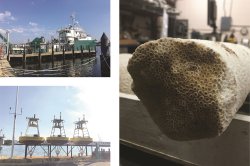
Taken together, these experiences from all walks of science have enriched my PhD journey, and prepared me for the next stop in my profession and life. While the future is uncertain, I rest assured that my thirst for exploration will point my career compass toward fulfillment and happiness.
